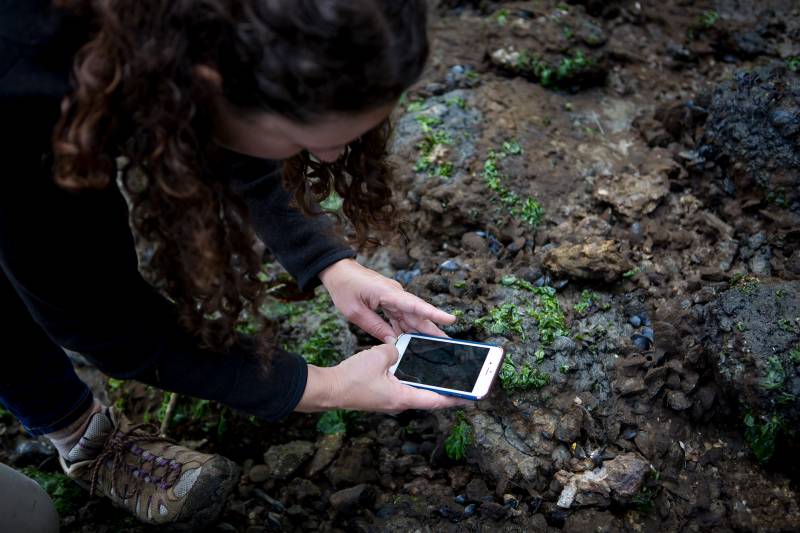“Her picture of it was the first record of that species in 80 years,” said Johnson. “And that was just her turning over a log, taking a picture, and another expert being online to identify it.”
According to Global Biodiversity Information Facility, iNaturalist observations — more than 35,000,000 to date — have contributed to almost 500 peer-reviewed articles. This weekend will be an opportunity to support that effort.
What You Can Do
In past years, the City Nature Challenge gathered people together in parks and public lands to take pictures of everything from moss to birds. And it was a competition to see which city could make the most observations, document the most species, and recruit the most participants.
But not this time. Now, organizers just want people to appreciate the natural world where they can. Though gatherings in parks and public lands are not possible because of the novel coronavirus, Johnson says people following their local public health guidelines can still participate.
“iNaturalist is best for wild things,” she explains. That includes commonly overlooked creatures like house centipedes or the weeds growing out of a crack in the concrete. For example, this year’s list of most-wanted sightings in San Francisco includes crickets. Though there are multiple native cricket species living in the city, there are only 10 confirmed observations in the database.
While you may think you have to go outside to find plants or animals to document, Johnson says photos taken from your window are useful. And if you can’t quite get a shot of that bird you see at the feeder, no worries! Record the sound of its call and upload that instead. You just need concrete evidence to help experts confirm your observation.
If going outside is not an option, the Academy’s Never Home Alone project specifically looks for the critters living with us indoors. Johnson says that in a typical house, there could be up to 93 species of insects “like beetles or things that don’t hurt you, but just live associated with humans.”
She suggests looking in the nooks and crannies of your house, such as around the sink or under the bed.
“Take pictures of those things that are actually right under your nose or above your head normally,” she said.
This is an activity especially suitable for children, Johnson says. “Kids are really good finders of things, if they’re given permission to explore and be curious.”
And it’s a great way for grown ups to experience nature, too. It’s important, she says, “for adults to give ourselves permission… to be curious and to look around and have those moments of wonder and awe about things that we don’t know.”
Though you can log observations in iNaturalist throughout the year, the City Nature Challenge is an opportunity to participate in a global community of citizen scientists in real time. People everywhere are sheltering in place, says Johnson. “But we’re going out where we can and still trying to celebrate nature around us and share that. Even though we’re apart, we’re doing it together.”
So this weekend, consider a trip to your backyard or under your sink to snap a picture of the nature around you. Even if you’ve seen that plant a million times before, or you think that bug is too creepy, there’s a chance you’ve found something new.
All the observations will be identified and tallied by the community between April 28 and May 3, with results announced May 4.

